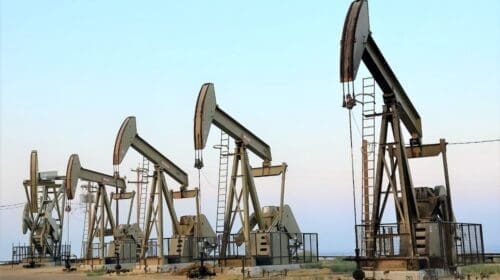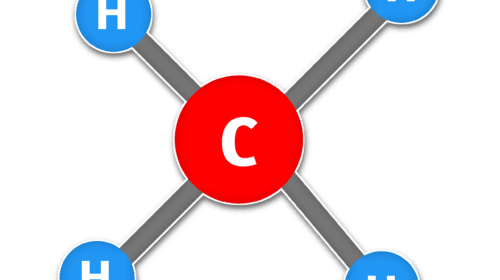OILMAN Magazine recently interviewed Michael Ferrante, W Energy Software’s VP of Transportation, to learn how the Tulsa-based software developer is helping energy companies move oil, gas and water in powerful new ways, maximize measurement and meter accuracy, and safeguard customer data along the value chain.
Nick Vaccaro: How long has W Energy Software been in business and what was the catalyst for pursuing the pipeline and distribution software market?
 Michael Ferrante: W Energy Software was started 12 years ago to build the next generation of oil and gas software on the cloud. At that time, the cloud was new in the minds of energy professionals and what we were doing seemed radical but, as it turns out, the cloud is where everyone has moved. W Energy Software had first mover advantage and our cloud-based solutions continue to lead the pack. What sets us apart is that we started with a complete blueprint for what we wanted to build, midstream and upstream, all in one application that enables a free flow of data between workflows. Our first product was the industry’s first and only SaaS plant accounting solution. From there we followed our blueprint, building solutions for every link in the value chain from gathering and transportation pipelines to terminal management and marketing. A few years ago, we expanded into upstream and have since gained rapid market share in upstream accounting, land management and production operations.
Michael Ferrante: W Energy Software was started 12 years ago to build the next generation of oil and gas software on the cloud. At that time, the cloud was new in the minds of energy professionals and what we were doing seemed radical but, as it turns out, the cloud is where everyone has moved. W Energy Software had first mover advantage and our cloud-based solutions continue to lead the pack. What sets us apart is that we started with a complete blueprint for what we wanted to build, midstream and upstream, all in one application that enables a free flow of data between workflows. Our first product was the industry’s first and only SaaS plant accounting solution. From there we followed our blueprint, building solutions for every link in the value chain from gathering and transportation pipelines to terminal management and marketing. A few years ago, we expanded into upstream and have since gained rapid market share in upstream accounting, land management and production operations.
NV: Discuss the demographics of W Energy Software’s client base. Does it consist mainly of midstream companies, and can you share some customer names?
MF: Our oil and gas SaaS ERP is used by land professionals, upstream accountants, field staff, engineers, energy traders and marketers, liquids and gas schedulers and midstream accountants – really anyone involved in the value chain. That covers a lot of ground, from lease administration, production accounting, division order and field operations to tracking the accounting movement of hydrocarbons from the wellhead to points of sale and city gates. Since our roots are in midstream, our client base is weighted in that direction, but we are seeing accelerated growth in upstream as well. Some recent new clients include Phillips 66, H2O Midstream, Eagle Claw Midstream, Pinnacle Midstream II, Laredo Petroleum, Killam Oil Company, Oxley Energy and HKN Energy.
NV: With the variety of software segments W Energy Software offers, how does the new transportation management system fit into your product roadmap?
MF: We recently acquired Chorus Logistics, which complements our existing oil and gas SaaS ERP by adding new capabilities to track cross-commodity shipments across any mode of transportation in real time. Our clients can now follow every molecule at every moment from the wellhead to final disposition whether transported along pipelines, truck, rail, vessel or barge. Today, commodities move in a mix of transportation modes so having this capability delivers unprecedented visibility into commodity movement at every moment. It’s not just oil, gas and NGL that energy companies need to move; producers and midstream need to track a wide range of commodities to their point of sale or disposal, such as water, CO2, sulfur and even lithium.
NV: How does the transportation management system influence fiscal efficiency and improve delivery of product?
MF: Our transportation management system has a cloud-based back office management application called Axle Hub and a field data capture and smart routing mobile app called TollTagger. For carriers this is a real game changer because it effectively gives them a complete back office software suite and creates new operational efficiencies. Water haulers, for example, can cut up to 30 cents off of every barrel they move. If you consider that up to 10 barrels of water are produced for every barrel of oil in parts of the Permian, this can really add up. That makes carriers more efficient, and the savings can be passed back to producers to help lower their lifting costs.
NV: Explain how utilizing this segment of W Energy Software benefits the user.
MF: TollTagger is a real force multiplier for trucking fleets. It uses machine learning algorithms similar to technology used by FedEx and UPS to intelligently route haulers to their pickup and delivery points. This helps them optimize every route they take, dodge traffic on the road, bypass locations where trucks are waiting in line and avoid deadhead runs. All of this saves fuel and cuts emissions, [which is] good for truckers and ESG. The big upshot is that TollTagger and Axle Hub are truly intermodal; companies can track any commodity across any mode. This lets pipeline operators control the destiny of the commodities they move by extending their transportation capabilities into trucking, rail and marine.
NV: Does the transportation management system software make meeting governmental regulation any easier? If so, how does it accomplish this?
MF: Yes, and a great example is the International Fuel Tax Agreement, or IFTA. This regulation applies to haulers who move commodities across U.S. state lines and Canadian provinces. It requires extensive time and resources each month to track fuel usage across even a small fleet, and it creates a barrier to entry for new carriers. W Energy’s Chorus Logistics solution helps by enabling carriers in the field to capture fuel usage then automatically generate IFTA reporting.
NV: W Energy Software is also making advancements in other areas of the value chain, including measurement. What is the benefit of capturing volumetric readings and measurements?
MF: Measurement is fundamental up and down the value chain. Crude oil, natural gas and refined products all behave differently under different environmental conditions, [such as] gravity, pressure, temperature, etc. We measure product everywhere in the value chain, not just volume readings but physical measurements of storage tanks, or tank gauging.
NV: What applications or use cases are there for measurement data management in pipeline and other areas of midstream?
MF: Since W Energy Software is so focused on accounting, ensuring accurate meter readings is a top priority. A typical gathering and pipeline system is outfitted with many supervisory control and data acquisition, or SCADA, meters. These generate a torrent of data, underscoring the need for robust measurement data management. To achieve continuous meter accuracy, you need data management tools to calibrate and test meters as well as organize vast volumes of measurement data in forms that can be easily consumed by applications and energy professionals. Tank storage is another big application of measurement data management where you need to constantly balance crude oil and refined product volumes to ensure inventory accuracy.
NV: How is W Energy Software working with energy companies to build out its measurement capabilities?
MF: Last year we invited energy companies to join our WE Measure Product Consortium. Rather than armchair quarterbacking our measurement data management product, we wanted to ensure what we build fits real world use cases and solves the current challenges of the measurement community. Companies that have joined are shaping the direction of WE Measure. In return, these early adopters gain early access to the software and benefit from reduced pricing, among other incentives. There’s been a tremendous response and we’re very excited later this year to show the entire industry what we’ve built. Companies can still join the measurement consortium; the invitation is still open.
NV: Even though W Energy Software measurement solution is not commercially available yet, are there any early adopters you can talk about?
MF: WE Measure is slated to be commercially available in Q4 of 2021; however, it’s already being deployed at a few of our clients. We recently announced that Phillips 66 went live with W Energy Software’s terminal management solution at their Beaumont Terminal, the largest in the Phillips 66 portfolio with 74 tanks. As part of that project, pieces of WE Measure were deployed to provide advanced measurement capabilities. This included measurement calculations for intermodal tickets and the ability to balance 18 different grades of crude oil and refined products.
NV: Given the recent string of cyber-attacks on U.S. firms and pipelines, what is W Energy Software doing to safeguard its clients?
MF: In the digital oilfield where cloud computing is so important, who you choose to host your applications with sets the bar for security. Knowing that we are responsible for the highest levels of protection for client data, W Energy Software partnered with Amazon Web Services, which offers category leading physical security at their data centers, as well as an arsenal of digital security capabilities. Importantly, every member of our DevOps team is certified in AWS best practices. Combined with our exhaustive and meticulously maintained IT Security Policy, W Energy Software clients are backed by the best cyber security in the business.
NV: How would W Energy Software mitigate a cyber security attack involving ransomware?
MF: Ransomware only succeeds where IT Security Policy response plans fail. Knowing that a malware attack of any kind is possible, every organization should document its mitigation efforts and be able to quickly implement them, if ever needed. W Energy Software creates daily backups of all client databases and our own code. These backups are digitally transferred to multiple geographic locations in the country and physically transported as well. Importantly, our backups are tested thoroughly to ensure their integrity when needed. In the unlikely event of a successful attack, systems can be rapidly restored to safe points.
NV: What further steps can be taken to protect W Energy Software’s clients and data?
MF: Continuous training and testing are an important component of our IT Security Policy. Our security experts know that endpoints – employees, contractors and others who have access to a network – pose the biggest threat to any organization. Every W Energy Software employee is trained on day one of their job to ensure they have learned security best practices, including knowing how to spot and prevent phishing attempts, [which are] all too often how most malware ends up on a corporate network. Everyone must be vigilant.
NV: Does W Energy Software utilize any type of auditing process or entity to assess any software shortfalls and identify where improvements are needed?
MF: Yes, we utilize a third-party auditing service each year to assess our security readiness, both physical and digital security. Through our SOC-1 and SOC-2 audits, W Energy Software undergoes rigorous evaluations to assess our vulnerabilities and the controls we have put into place to safeguard our systems, including penetration testing. At the end of the day, our clients need to know that W Energy Software is the right solution with the right security and the right hosting.
Nick Vaccaro is a freelance writer and photographer. In addition to providing technical writing services, he is an HSE consultant in the oil and gas industry with twelve years of experience. Vaccaro also contributes to SHALE Oil and Gas Business Magazine, American Oil and Gas Investor, Oil and Gas Investor, Energies Magazine and Louisiana Sportsman Magazine. He has a BA in photojournalism from Loyola University and resides in the New Orleans area. Vaccaro can be reached at 985-966-0957 or nav@vaccarogroupllc.com.
Oil and gas operations are commonly found in remote locations far from company headquarters. Now, it's possible to monitor pump operations, collate and analyze seismic data, and track employees around the world from almost anywhere. Whether employees are in the office or in the field, the internet and related applications enable a greater multidirectional flow of information – and control – than ever before.












